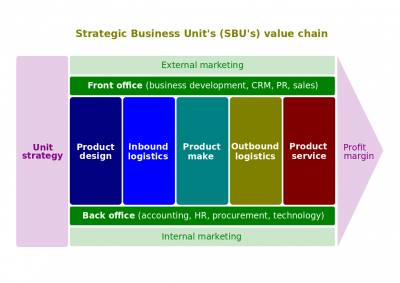Difference between revisions of "Marketing"
(→Impressions) |
(→Impressions) |
||
| Line 24: | Line 24: | ||
===Impressions=== | ===Impressions=== | ||
*# [[Market impression]], product vs producer vs endorser vs channel impressions | *# [[Market impression]], product vs producer vs endorser vs channel impressions | ||
| − | *# [[Market communicable]], message vs media, promise vs reality | + | *# [[Market communicable]], message vs media, message source, media trustworthiness, promise vs reality |
*# Branding, brands of brands, [[reputation management]] | *# Branding, brands of brands, [[reputation management]] | ||
*# [[Marketing communications]], [[integrated marketing communications]] | *# [[Marketing communications]], [[integrated marketing communications]] | ||
*# [[Marketing communications mix]], [[advertising]] vs [[publicity]] vs personal communications vs sale promotions | *# [[Marketing communications mix]], [[advertising]] vs [[publicity]] vs personal communications vs sale promotions | ||
| − | *# Direct vs indirect communications, words of mouth | + | *# Direct vs indirect communications, words of mouth, [[false flag operation]]s |
*# [[Marketing media]], [[marketing media mix]], [[media mix]], paid vs owned vs earned media | *# [[Marketing media]], [[marketing media mix]], [[media mix]], paid vs owned vs earned media | ||
Revision as of 20:35, 14 May 2023
Marketing is a set of endeavors that an market actor undertakes to complete a market exchange.
Contents
Definitions
According to Marketing Management by Keller and Kotler (15th edition),
- Marketing. The activity, set of institutions, and processes for creating, communicating, delivering, and exchanging offerings that have value for customers, clients, partners, and society at large.
According to Juran's Quality Handbook by Defeo (7th edition),
- Marketing. The process of promotion, including activities to provide product labeling for warnings, dangers, antidotes; training of the field force in the contract provisions; supplying of safety information to distributors and dealers; setup of exhibits on safety procedures; conducting of tests after installation and training of users in safety; publication of a list of dos and don’ts relative to safety; establishment of a customer relations climate that minimizes animosity and claims.
According to Managerial Accounting by Braun, Tietz (5th edition),
- Marketing. Promotion and advertising of products or services.
According to the ASME EMBOK,
- Marketing. Strategies and activities that focus on assessing the needs and wants of potential customers and then meeting those needs.
Core concepts
Market
- Market, market actor, buyer choice
- Seller vs marketer
- Unaware consumer vs prospect lead vs marketing-qualified prospect vs sales-qualified prospect vs buyer
- Market offering vs marketable
- Seller objective, buyer's purchase vs donation vs action such as learning, participation, or vote
- Market presence, impression vs distribution vs customer support vs transaction support
- Competition, Porter's Five-Forces Model, rivals vs new-entrants vs buyers-power vs suppliers-power vs substitutes
Impressions
- Market impression, product vs producer vs endorser vs channel impressions
- Market communicable, message vs media, message source, media trustworthiness, promise vs reality
- Branding, brands of brands, reputation management
- Marketing communications, integrated marketing communications
- Marketing communications mix, advertising vs publicity vs personal communications vs sale promotions
- Direct vs indirect communications, words of mouth, false flag operations
- Marketing media, marketing media mix, media mix, paid vs owned vs earned media
Engagements
- Market engagement, market transaction
- Market exchangeables, ownership transfer, consumables vs possessions
- Services, accesses vs work vs experiences vs communications, value co-creation
- Marketing conversion, unaware-to-aware, aware-to-educated, educated-to-customer, customer-to-advocate conversions, marketing-conversion funnel
- Satisfaction, customer satisfaction, customer relationship management (CRM)
- Attitude, cognitive attitude vs affective attitude vs behavioral attitude, motivation, needs vs wants vs demands
- Marketing channel, integrated marketing channel system
Marketing function
- Marketing, business model, Business Model Canvas, value chain, product vs production, competitive strategy
- Competitive advantage, core competency, marketing intelligence vs public relations vs sales vs product marketing, supply chain
- Market segmentation, target market
- Customer-value hierarchy, core benefit vs basic product vs expected product vs augmented product vs potential product
- Market positioning, points of parity vs points of difference, value proposition
- Business development, Ansoff Matrix
- Product lifecycle, BCG matrix
